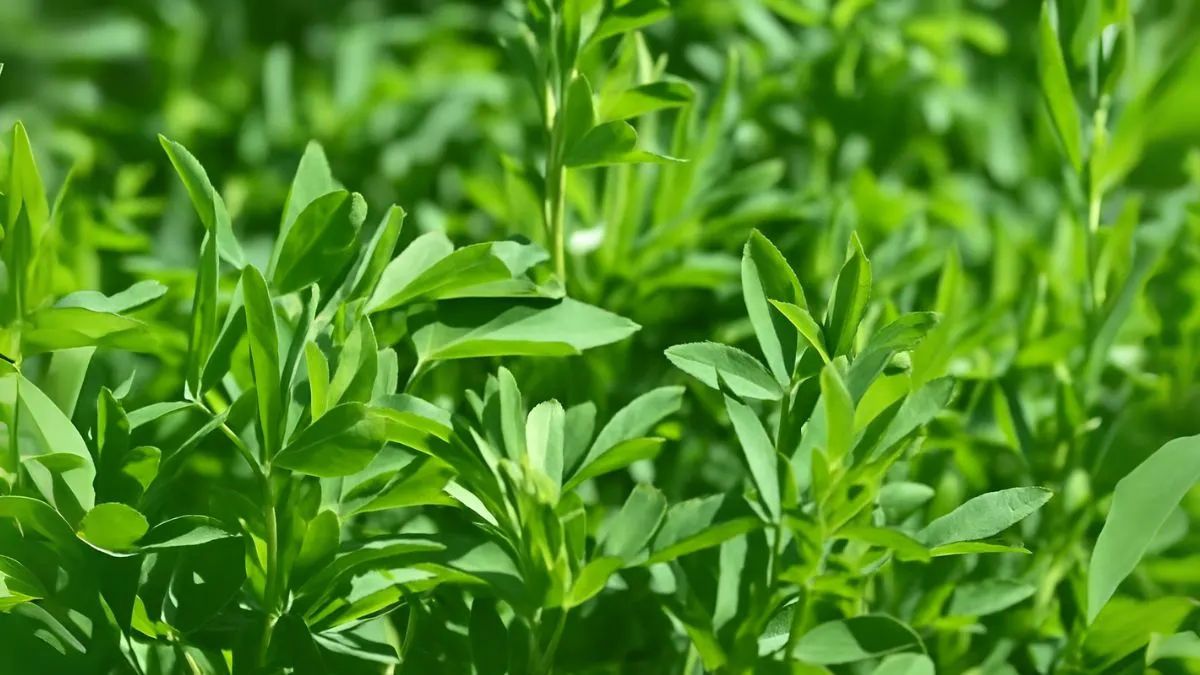When it comes to resilient, versatile, and nutrient-packed crops, alfalfa (Lucerne grass) stands out. Whether you’re a home gardener looking for a health-boosting sprout or a farmer aiming for high-protein livestock feed, alfalfa is a plant worth growing.
The good news? Growing alfalfa is easier than you think. With the right timing, soil, and care, this plant can thrive in many regions of the world. In this article, I’ll guide you through the entire process, from seed to harvest, while also sharing personal insights I learned during my first attempt at growing it in late summer.
What Makes Alfalfa Special?

Alfalfa (Medicago sativa), often called Lucerne grass, is more than just fodder. It’s a nutrient-rich plant used in agriculture, herbal medicine, and even in modern wellness diets. Its roots grow deep into the soil, helping improve soil health and water retention.
For livestock, it’s a top choice because of its high protein and fiber content. For humans, sprouted alfalfa seeds are a superfood loaded with vitamins A, C, E, and K.
The Best Time to Plant Alfalfa Seeds
Timing plays a crucial role in growing this crop. According to agricultural experts, the best time to plant alfalfa seeds is during the summer or spring months, when soil temperatures are warm enough to encourage germination.
However, depending on your location, you can also plant in spring, late summer, and autumn.
Planting Season |
Best Regions |
Benefits |
Spring |
Canada & Northern USA |
Early growth before summer heat |
Summer |
Most temperate regions |
Fast germination, long growing window |
Late Summer |
Warmer areas |
Avoids midsummer drought stress |
Autumn |
Mild climates |
Strong root establishment before winter |
From my personal experience, late summer sowing worked beautifully in my garden. The cooler evenings paired with warm days gave the seeds just enough balance to germinate quickly without drying out.
Also Read: Plant These Perennial Asters Now for a Blooming Backyard Every Fall
Step-by-Step Guide to Growing Alfalfa Seeds
1. Prepare the Soil
Alfalfa thrives in well-drained, slightly alkaline soil (pH 6.5–7.5). Loosen the soil to at least 6 inches deep and remove weeds, as alfalfa doesn’t compete well in its early stages.
Tip: Add compost to enrich the soil. When I mixed homemade compost into my plot, germination rates improved significantly.
2. Sowing the Seeds
- Rate: Use 15–20 pounds of seed per acre for large-scale farming, or about 1 teaspoon for a small container garden.
- Depth: Sow seeds ¼ inch deep; too deep and they may not sprout.
- Spacing: Scatter seeds evenly for a uniform cover.
This is where many beginners fail. Overcrowding can choke seedlings, so resist the temptation to overseed.
3. Watering Requirements
Keep the soil consistently moist but never waterlogged. Young seedlings are sensitive, and proper drainage prevents root rot. Once established, alfalfa becomes drought-tolerant thanks to its deep roots.
4. Sunlight & Climate Needs
Alfalfa is a sun-loving plant. Choose a spot that gets 6–8 hours of direct sunlight daily. In shaded areas, growth slows and yields suffer.
5. Fertilization
Alfalfa doesn’t require heavy fertilization. What it does need is phosphorus and potassium. If you’re in an area with nitrogen-deficient soil, don’t worry—alfalfa fixes nitrogen naturally through its root nodules.
6. Harvesting
- Sprouts: Ready in 7–10 days when grown indoors for salads or smoothies.
- Fodder/Grass: Cut when plants are about 15–20 inches tall, just before flowering, to retain maximum nutrition.
In my experience, the first cut gave the most tender and flavorful greens for smoothies, while later cuts were perfect for composting and livestock feed.
Also Read: The Secret Behind Rajnigandha Fragrance: How to Grow It at Home
Benefits of Growing Alfalfa
- Soil Health: The deep roots help break up compacted soil, improving aeration and fertility.
- Nutrition Boost: Sprouted alfalfa seeds are packed with antioxidants and are a common addition to health-conscious diets worldwide.
- Economic Value: For farmers, it’s one of the most profitable forage crops due to high demand in dairy and cattle industries.
- Environmental Impact: Alfalfa’s ability to fix nitrogen naturally reduces the need for chemical fertilizers, making it eco-friendly.
Common Challenges and Solutions
- Weeds: Alfalfa seedlings are slow-growing at first, so weeds can take over. Use mulch or pre-plant tilling.
- Pests: Aphids and leafhoppers are common. Introduce ladybugs or use neem oil sprays.
- Diseases: Root rot occurs in poorly drained soil—always ensure proper drainage.
Quick Reference for Alfalfa Growing
Factor |
Requirement |
Best Time to Plant |
Summer or spring months; also spring, late summer, and autumn |
Soil Type |
Well-drained, pH 6.5–7.5 |
Sunlight |
6–8 hours of direct light daily |
Watering |
Consistently moist, avoid waterlogging |
Harvest Time |
7–10 days (sprouts); 15–20 inches tall (fodder) |
Personal Experience Growing Lucerne Grass
When I planted alfalfa seeds in late summer, I worried that the unpredictable rains would damage the crop. To my surprise, the plants thrived. The seedlings germinated within 5 days, and by the second week, I had a thick, green cover in my garden.
Not only did the sprouts taste fresh in sandwiches, but the leftover cuttings also enriched my compost pile. For me, alfalfa proved that one plant can serve multiple purposes—nutrition, soil improvement, and sustainability.
Also Read: Seed Bombs: The Dirt-Cheap Way to Grow Flowers Anywhere
Conclusion
Growing alfalfa seeds (Lucerne grass) is a rewarding experience, whether you’re cultivating sprouts in your kitchen or planting acres for livestock. From soil preparation to harvest, the process is simple, eco-friendly, and beneficial for both you and the environment.
So why not give alfalfa a try this season? With just a few seeds and the right timing, you’ll unlock the benefits of one of the world’s most versatile crops.






